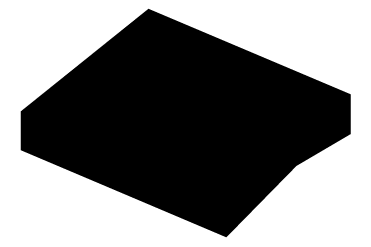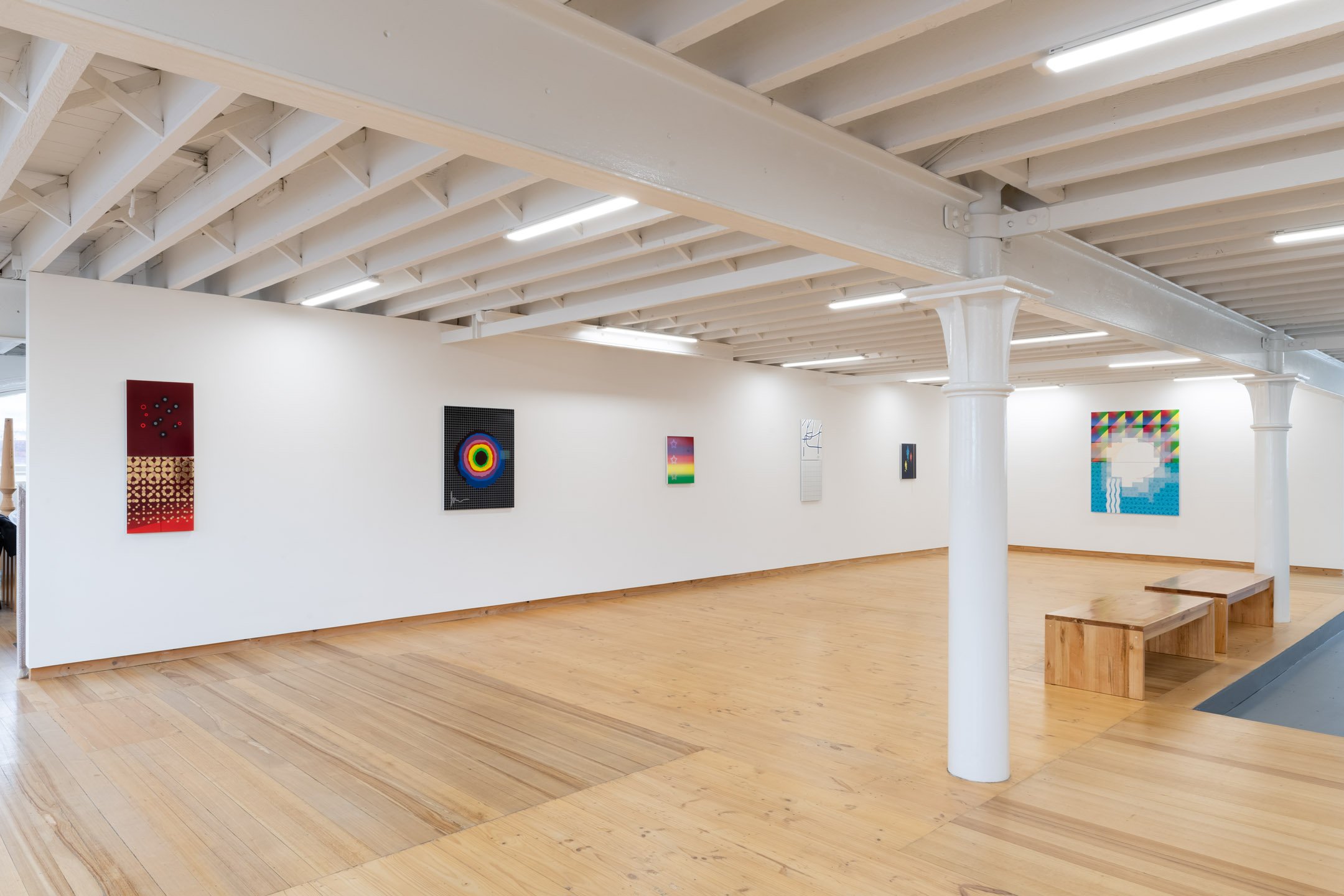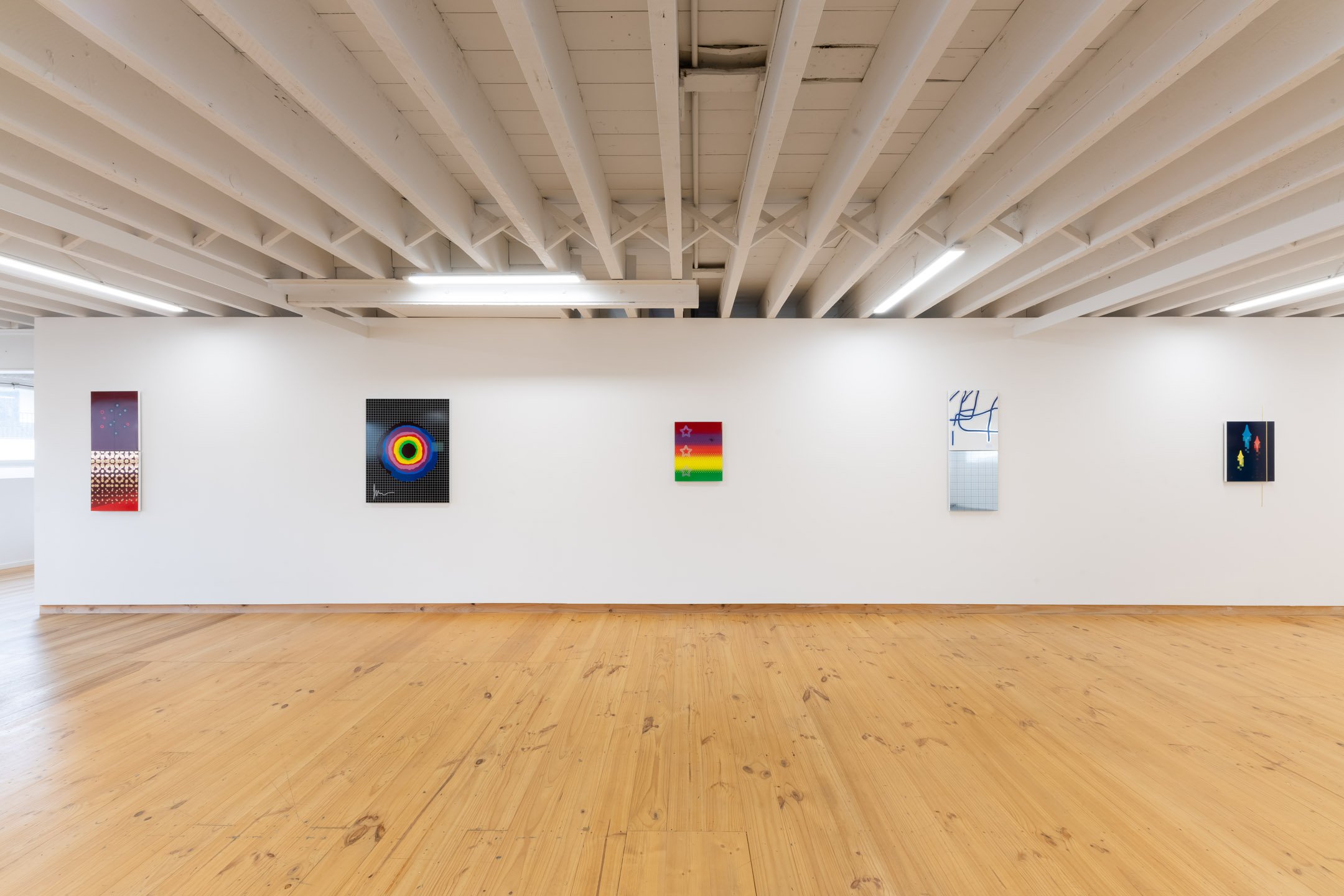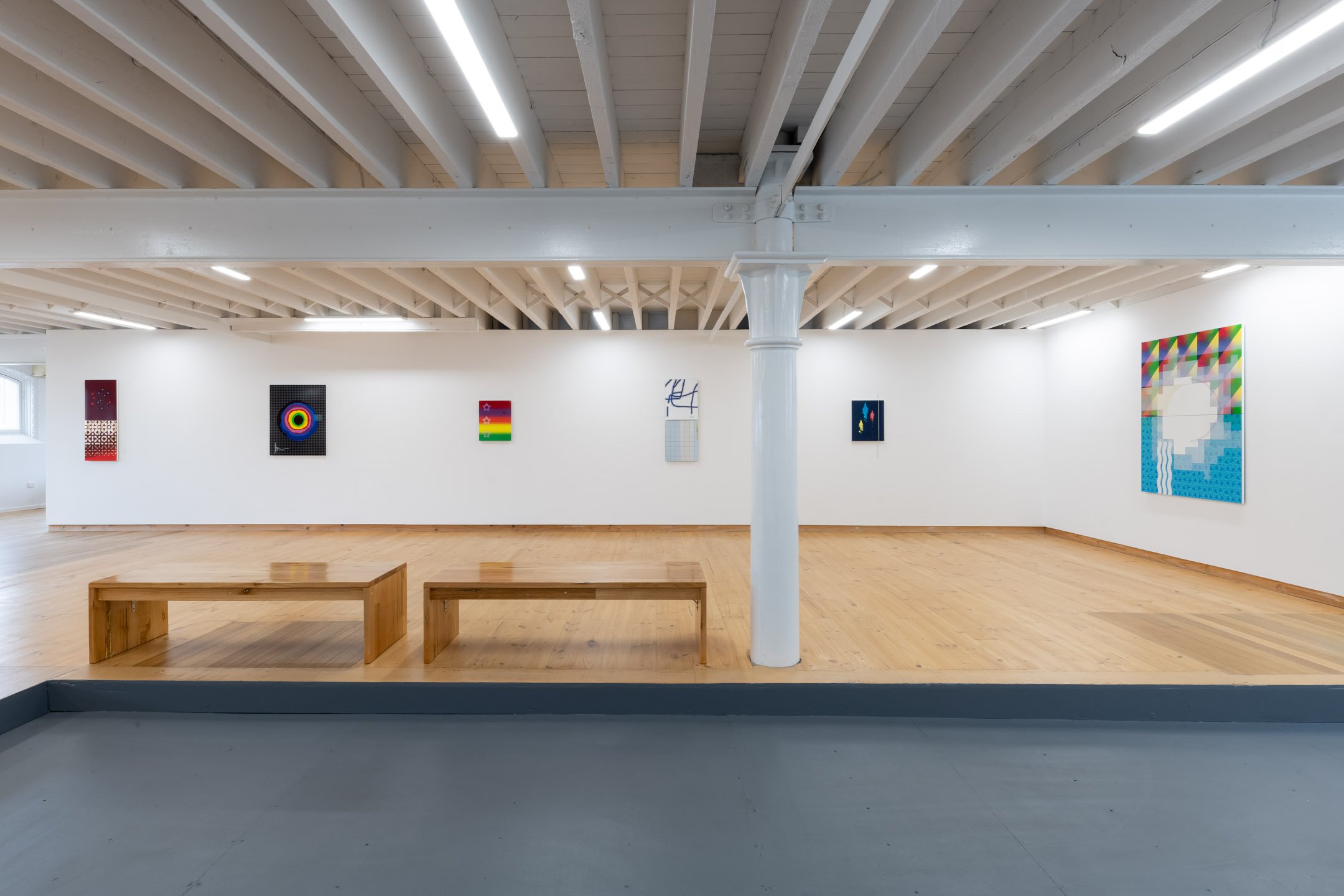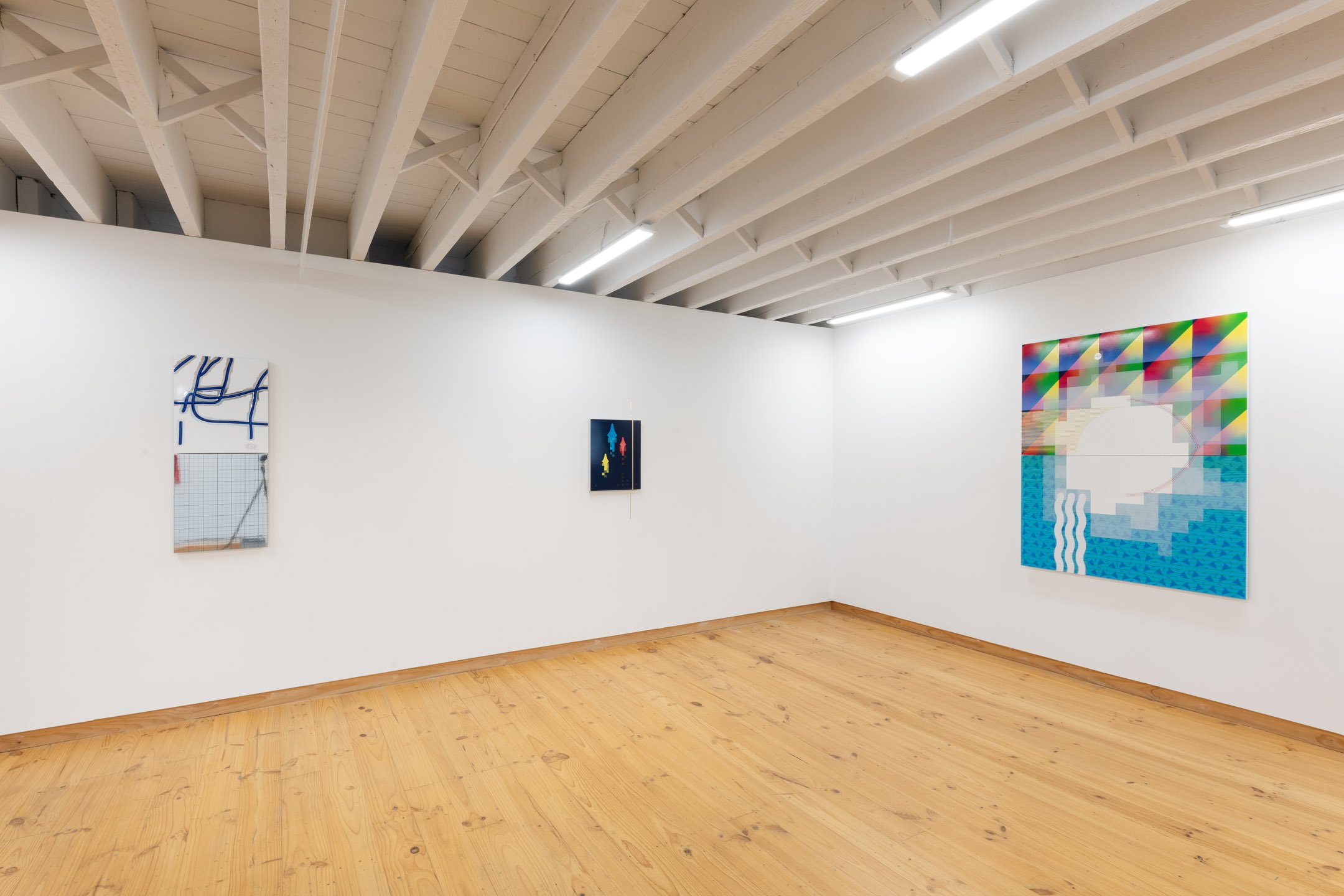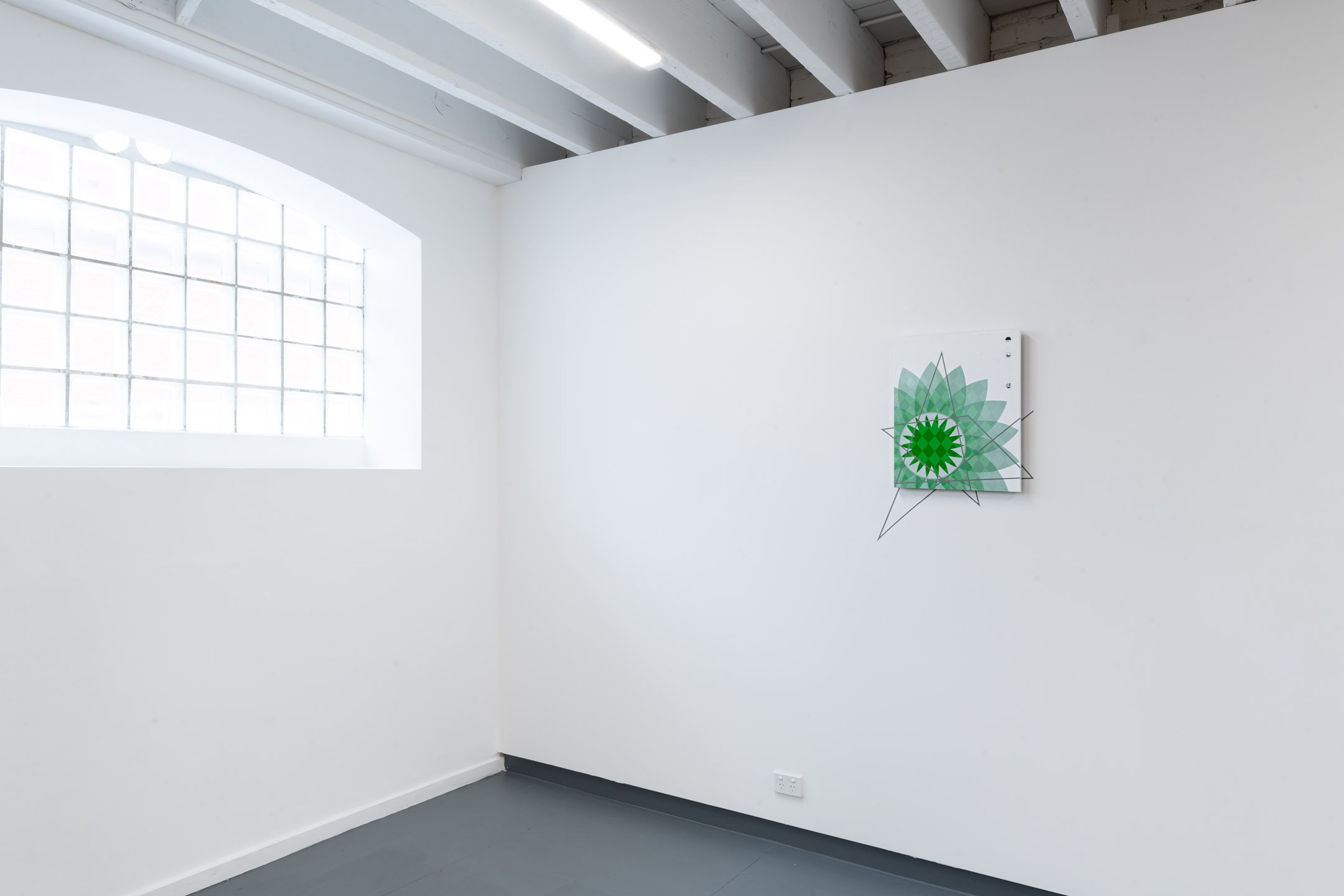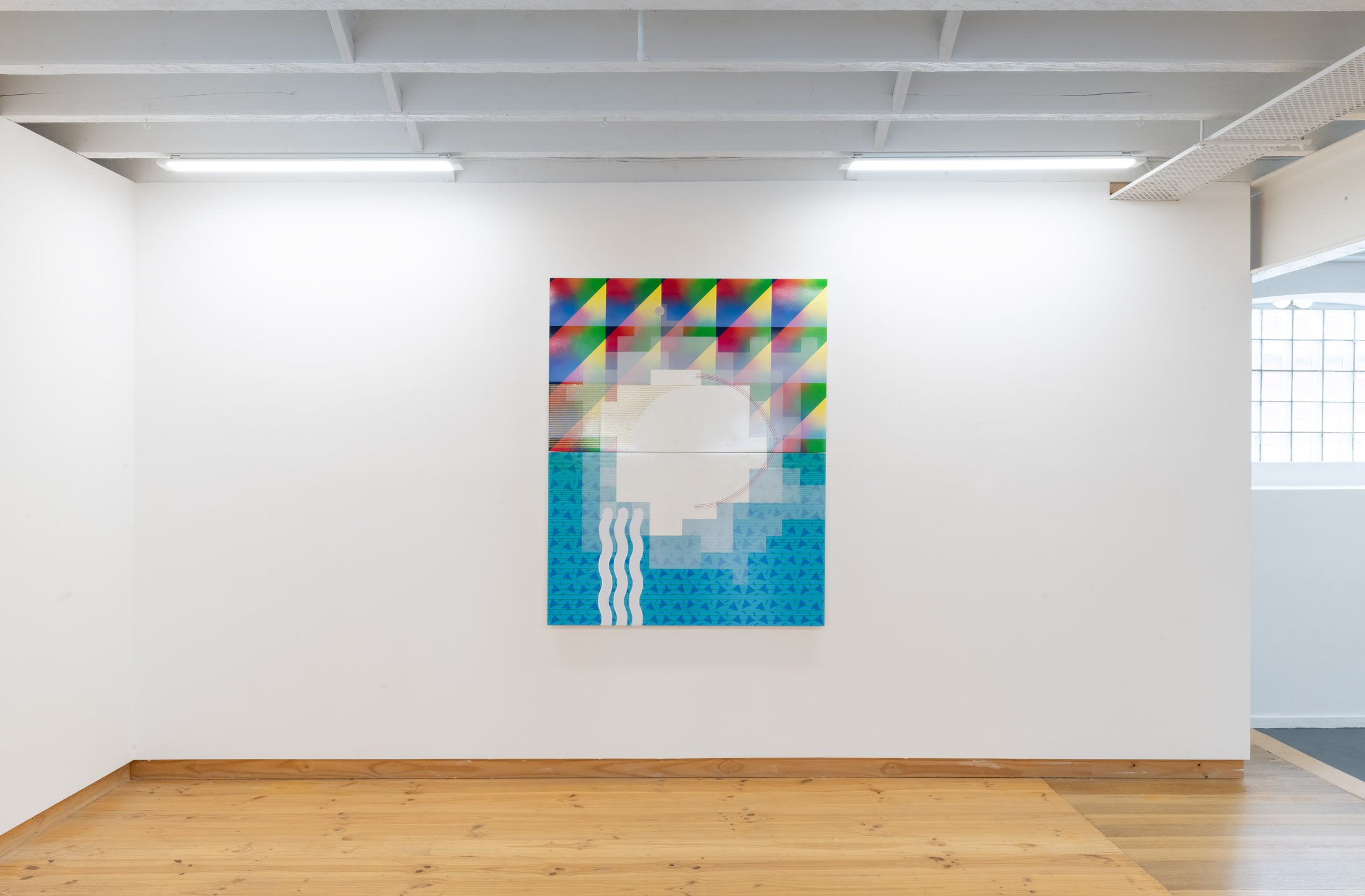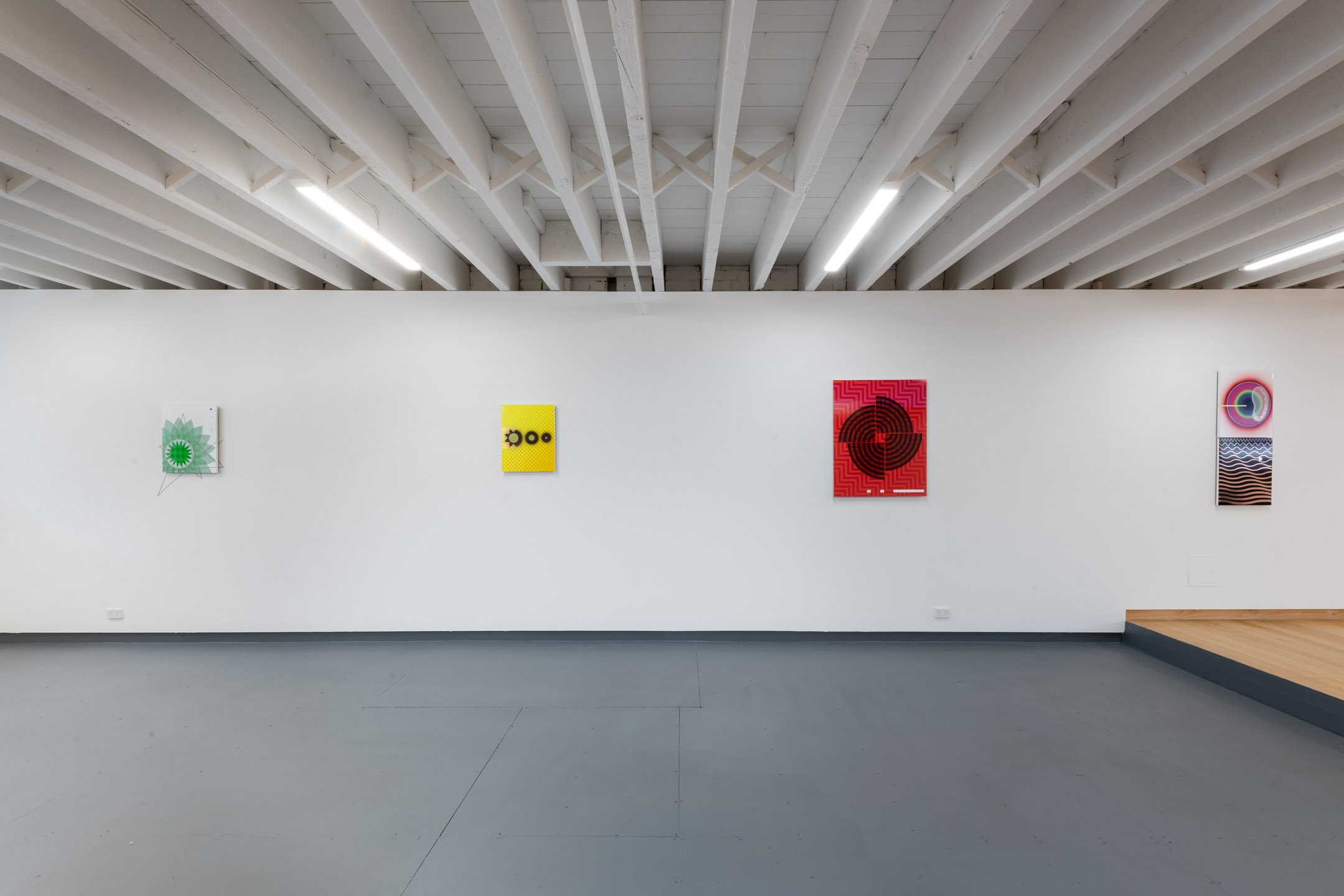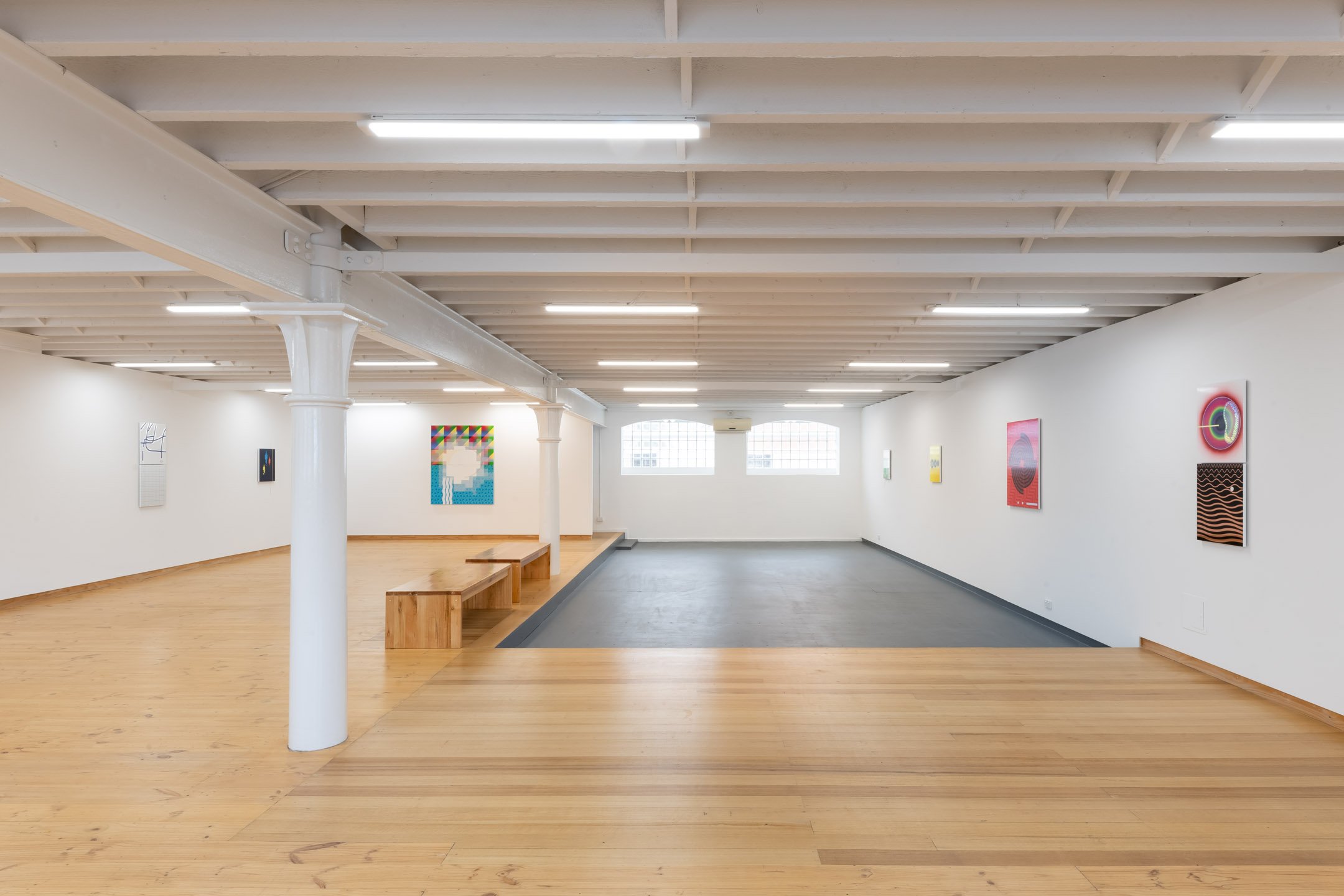Merric brettle: Physcopomp: In The Eye of The Beholder
29.03.23 - 06.05.23
Merric Brettle: Physcopomp: In The Eye of The Beholder
As an artist, I make work about our relationship with the world in which we live, and what is fundamental to me is exploring and expressing this aim in the work’s production.
Central to my methodology is an exploration and use of the ephemeral as this would be the sociocultural associations of various aspects of things in the world such as material, text and context etc.
This description of what I do ‘gets under the hood’ of my practice, and directly relates the methodology I use to the construction of meaning. I have been using an experimental arts practice to make work for the last twenty years. This methodology explores creativity as the product of a clash between the artist and their subject/reality. Making work in this way, I try and capture the presences of both my subject and myself, as these would be my sense for example of the socio-cultural associations of my subject and also the sense of ‘me’ generated by my expressiowithin fabrication. I then explore a resonance or reverberating relationship of cause and effect, between these presences, and personally reflect on its nature as I make work and construct meaning.
This reveals the way that I use an understanding of the presences of my subject and myself, as exploring them helps me make work. When reading my work however, the viewer considers this use a little differently. That is, as they explore this resonance as it would support what I say. It is in this way that understanding the presences and resonance between them that guided my construction, that the viewer considers an emotional/conceptual framework within which understand nuance and complexity within what the work refers to. In this way this resonance functions much in the same way as a painter’s brushstroke, as it puts emotional inflection on a piece.
To illustrate I first used this methodology in a series of works that explore our relationship to a constructed urban landscape. In these works, I captured the presence of my subject by employing the materials and methods of its construction like concrete, plastic and vacuum forming etc. not only because the allowed me to fabricate something but also for their socio-cultural associations.
My presence was then captured in the forms I created and the idiosyncratic way in which I explored the expressive possibilities of these ‘found’ materials and methods. When constructing meaning in the work I explored the resonance between these two presences as I made work about the way that we construct this landscape, but are never able to produce exactly what we want.
This reveals the way that I use the ephemeral as it would guide what I make the work about. When the viewer considers it however, they do so a little differently. That is, as it would give the work emotional inflection. To illustrate, I hoped for the viewer to read these presences and their resonance between them as they would reveal a landscape that is banal toxic and distorting, yet somehow beautiful, alluring and an expression of hope. It was in this way that I hoped for this resonance to give my work emotional depth much in the same way that a brush stroke or texture would. Making work in this way I hoped for the viewers to consider the nature of our relationship to this constructed reality as it would not only reflect our hopes and human abilities to realise them, but also our limits, failings and inability to avoid them.
Employing this methodology, I do not illustrate an idea but create contemplative pieces in which I hope for the viewer to explore sense, presence and resonance as they would express a more nuanced understanding of what the work refers to.
---
This kind of methodology can be simply ‘aimed’ at other subjects and it was with this in mind that I decided to explore our relationship with a now digitised social reality. That is as a social reality is a mixture of the ‘forms’ of our social relations that we interact with and the collective codification of reality that we use as a lens through which to see the world. Because this new subject has no physicality in itself, I started to explore text and text construction methods as my materials and methods. In particular, I explored this text as images and image construction techniques. I did not think that making this shift would be a difficult task, because if there is anything that expresses the ‘presence’ or sense of a social reality, then it is this form of text. I soon discovered however, that this change in subject would create fundamental problems for my methodology. The situation was that because images have no physicality in themselves, I couldn’t capture the presence or sense of my subject in the works materially as I had previously done. The effect of this was that I had an either/or choice between capturing the presence of my subject or my own in the forms I made.
This created a crisis in my methodology, which made not only making work difficult, but also, I realised, reading the work. Consequently, I became determined to find a way to capture these two presences in a piece. I managed to do this via collecting and remaking samples of images and image construction techniques from the Internet. These samples captured the socio-cultural associations/presence of my subject in themselves as they referred to something, while their transliteration from screen images to painted object using spray paint and sign writing vinyl captured mine. My presence was thus no longer in the forms of the work, but in its physicality, and so existed in for example the overlapping of paints between forms, the use of glazes to capture the effect of backlighting and an exploration of the logic of pixilation. This resolved my issue because the works were able to perform something like a cognitive ‘gestalt flip’. That is that like the classic optical illusion in which an image can be seen to ‘flip’ between being a depiction of a rabbit and duck, that these works could also ‘flip’ between being seen as either a sample/found image or an abstract minimalist painting.
This resolution however, created other problems because in locating the presence of my subject in the forms I create and myself in its physicality, I no longer had access to these forms as they could refer to anything. The implications of this was that I couldn’t make the works ‘about’ the relationship between the individual and my subject. I found this incredibly frustrating because this is in essence the ‘point’ of my methodology as an exploration. Consequently, I now had to find some way in which to allow for the works to refer to something, without displacing or destroying the presence of myself or my subject. The resolution I came up with was to explore different physical separations in the work that allowed for me to put either presences or references within them and thus allowing for all to be read in resonance.
To illustrate, I explored the use of different materials to make collage like works in which these images could be seen as separate or together thus preserving the presence in them of my subject while allowing for the relationship between images to refer to something else. I also started to join different panels that would allow for the use of one as a sample and the other as a vehicle for referring to my ideas. I then started to use the sides of the panels and their relationship with a wall as other places where I could locate a presence or a reference to something. It was with these separations therefore, that I felt I now had a whole lot of compartments or what to me seemed to be conceptual planes within which to locate presences and references and explore resonance between them.
---
There is still much that needs to be considered and explained about this expansion of my methodology, but what I can do now is explain the relationship between production and meaning as I both make work and hope for it to be read.
Exploring the nature of my subject with my methodology, I have come to the belief that while a social reality exists, that it is constituted by our projections. Within this framework, I have also come to believe that while we are objective to it as it would be constructed by others projections, we are not objective to it as it would also be constructed by our own. Consequently, I feel that before we can describe this construct and our relationship to it, that we must first understand how we can ‘see’ it as it would be other to us yet not.
The works in this exhibition express/explore this belief and so when considering the references within them, they all relate to the way that our projections are part of what we see even when we are perceiving the projections of others. When contemplating the physicalities of the work by contrast, I would like the viewer to think about the way that I explored my presence in relationship to the samples I use as it would create a reverberating relationship with the works, and in doing this see this relationship as a metaphor for that which we have with a social reality as we can ‘see’ it. It is thus for example, that I would first like the viewer to explore my ‘marks’ as they would be evidence of me ‘within the image/samples’ as there is ‘stuff’ in the glazes, ‘under the image’ as it would relate to the textures that exists, ‘on top of the image’ in the vinyl on top of the paint, and ‘other than the image’ as I would explore ‘around’ the panel or behind it. I would then like them to think about the way that the sense of a reverberating shifting surface that tracing of marks would suggest, would be a metaphor for the kind of vibrating immediacy that I think we need to understand that we have with a social reality before we see it.
When thinking about my personal perspective on a social reality, I do not attempt to describe the perspective I think we should construct, but only the perspective that I explored on the way that we may see that reality as it would be partly our projection. To express this, I would hope for the viewer to explore my ‘marks’ in the work as they would provide them with a metaphor for the experience I had. Consequently, I would like for them to explore the way that they are formally pulled into the works by some of these marks, pushed out by others, and made to go around them etc by yet others as they would in essence ‘step into my shoes’. It is in this way that I would hope they then think about what it means to be ‘in the eye of the beholder’.
Artist Statement, 2023
